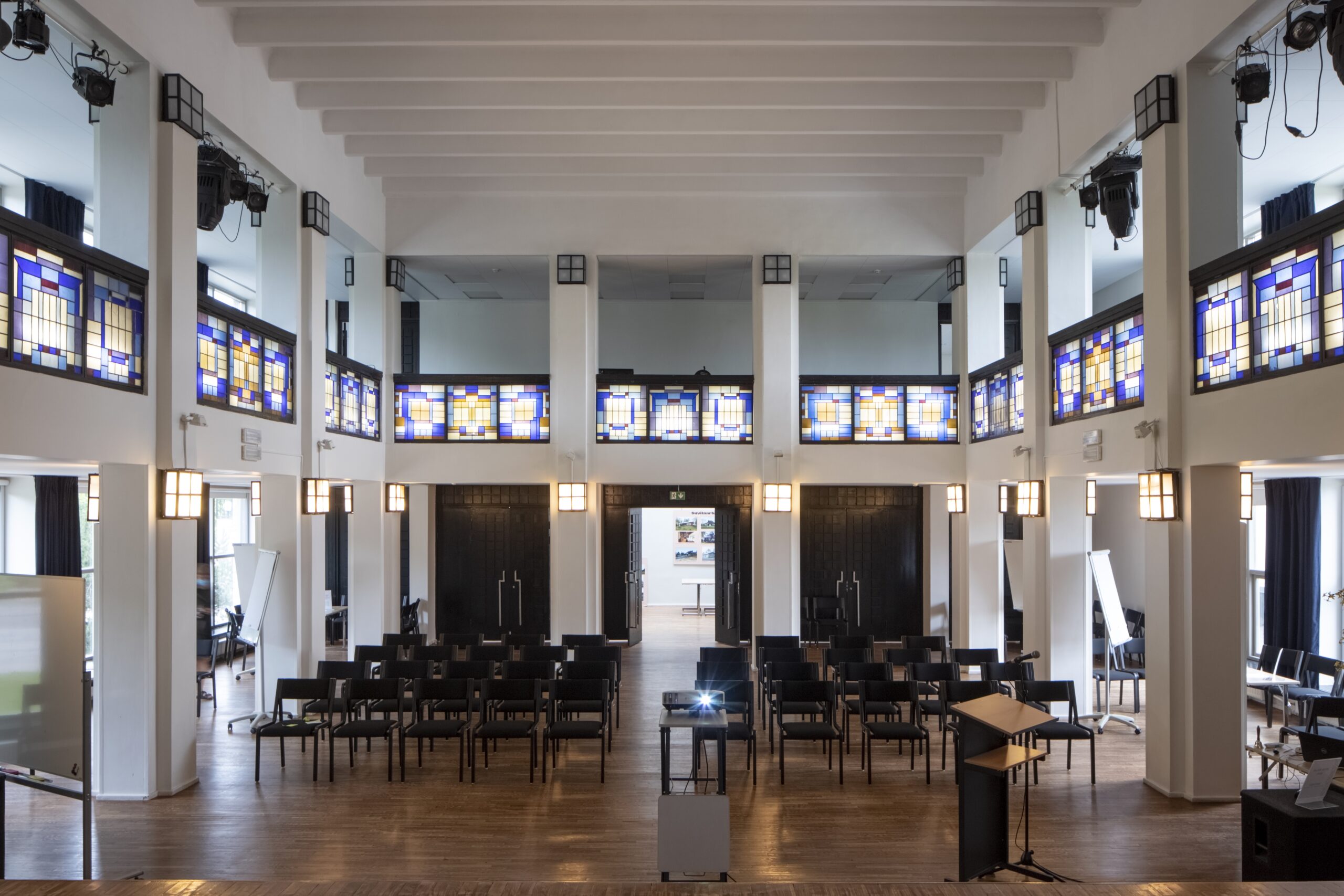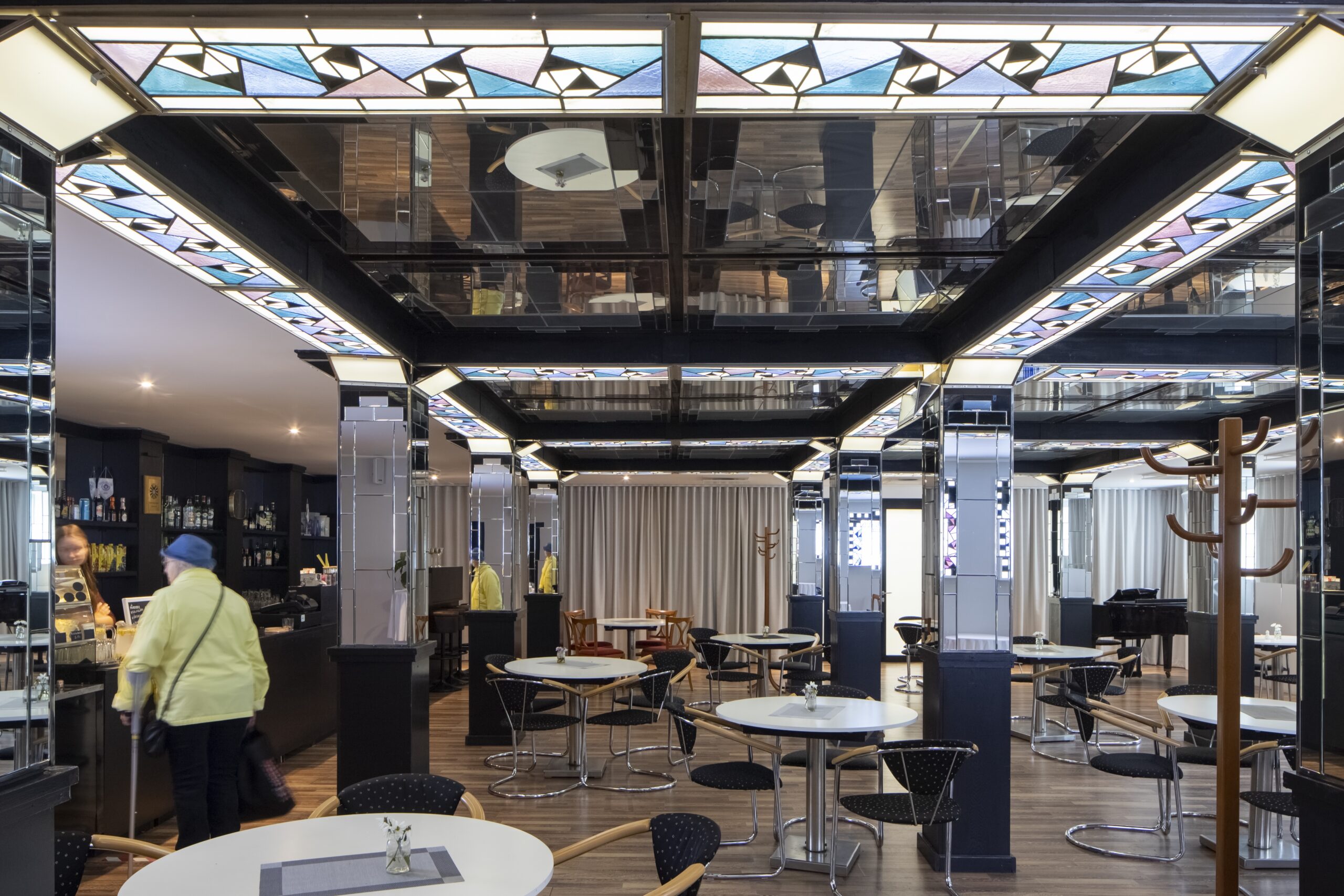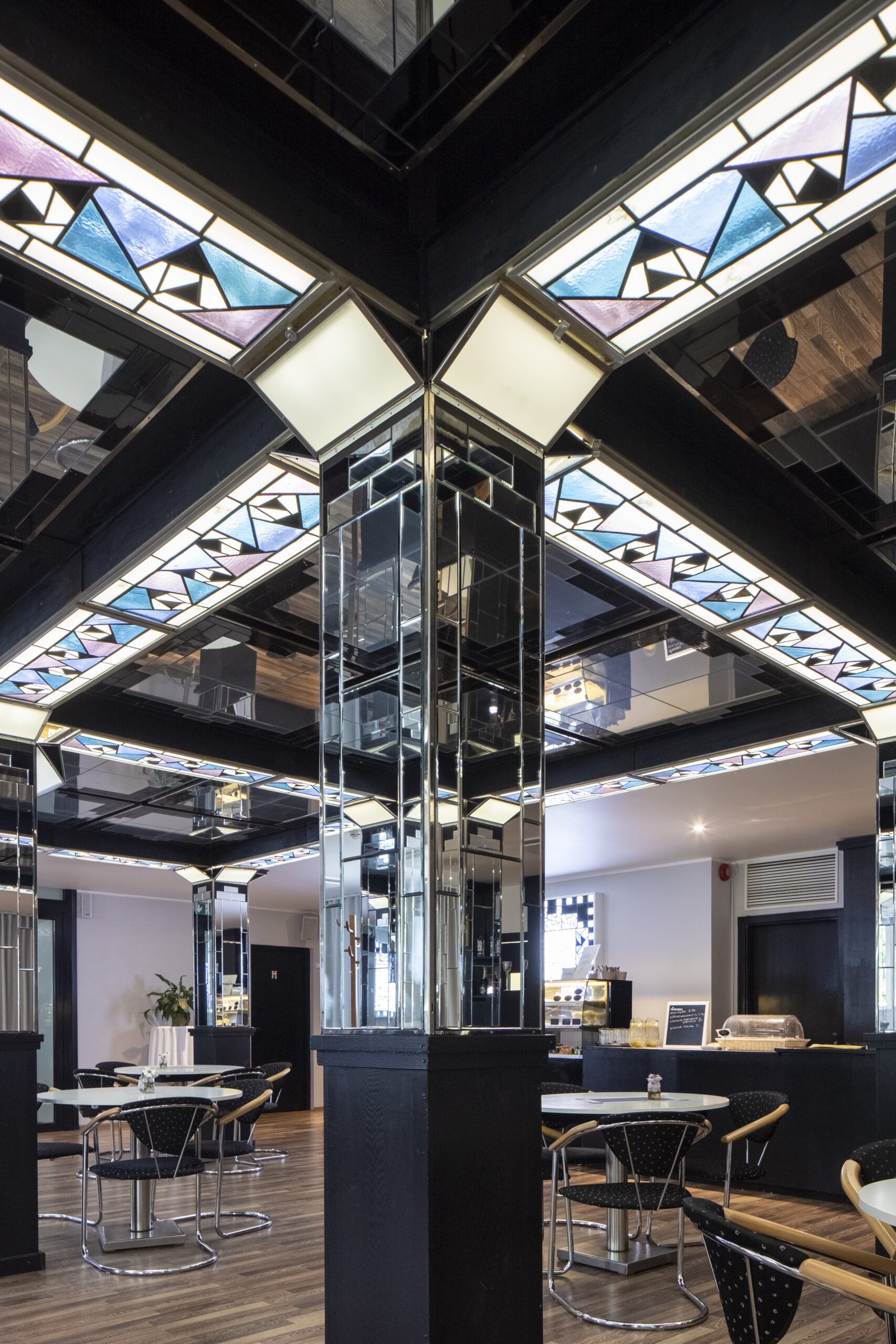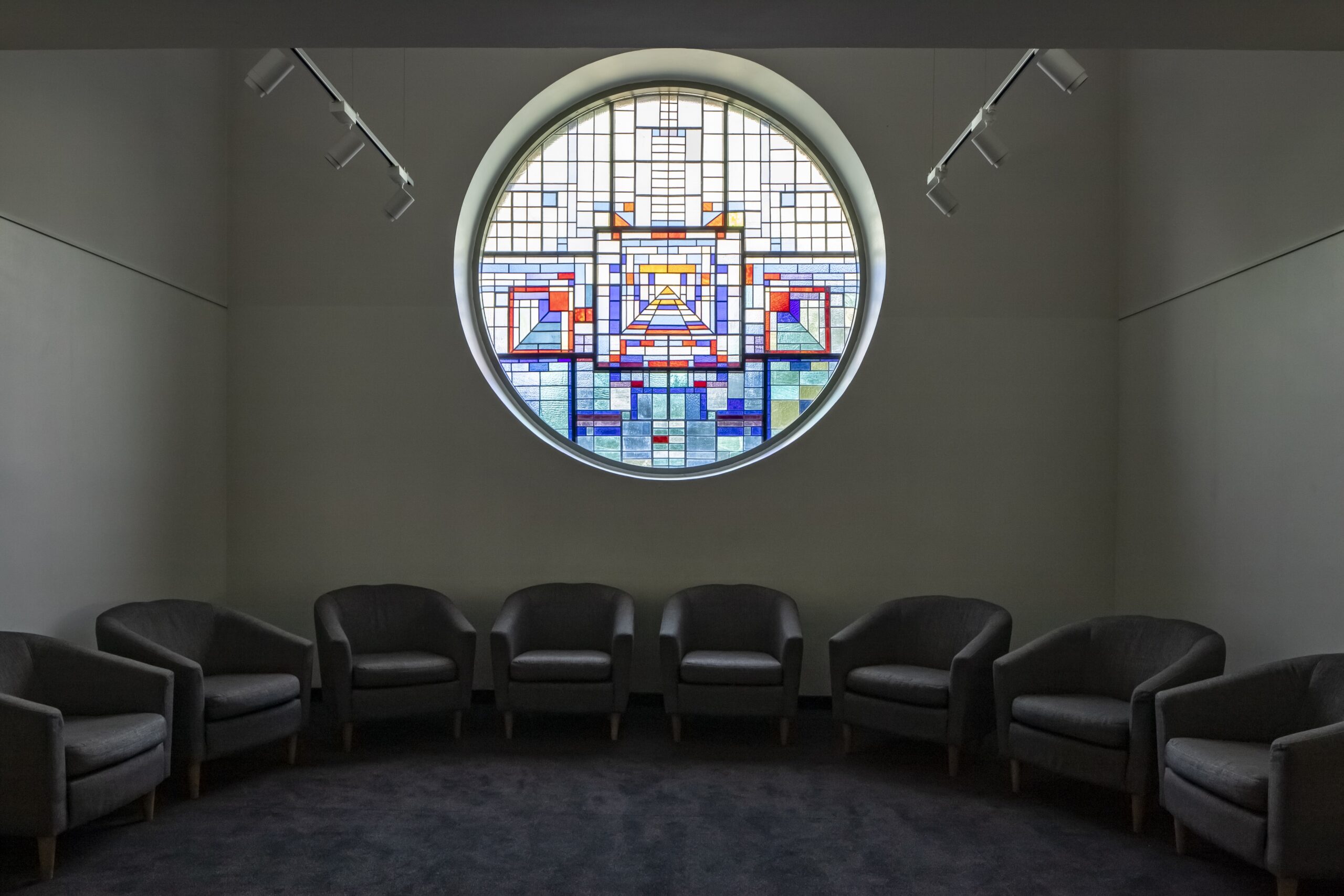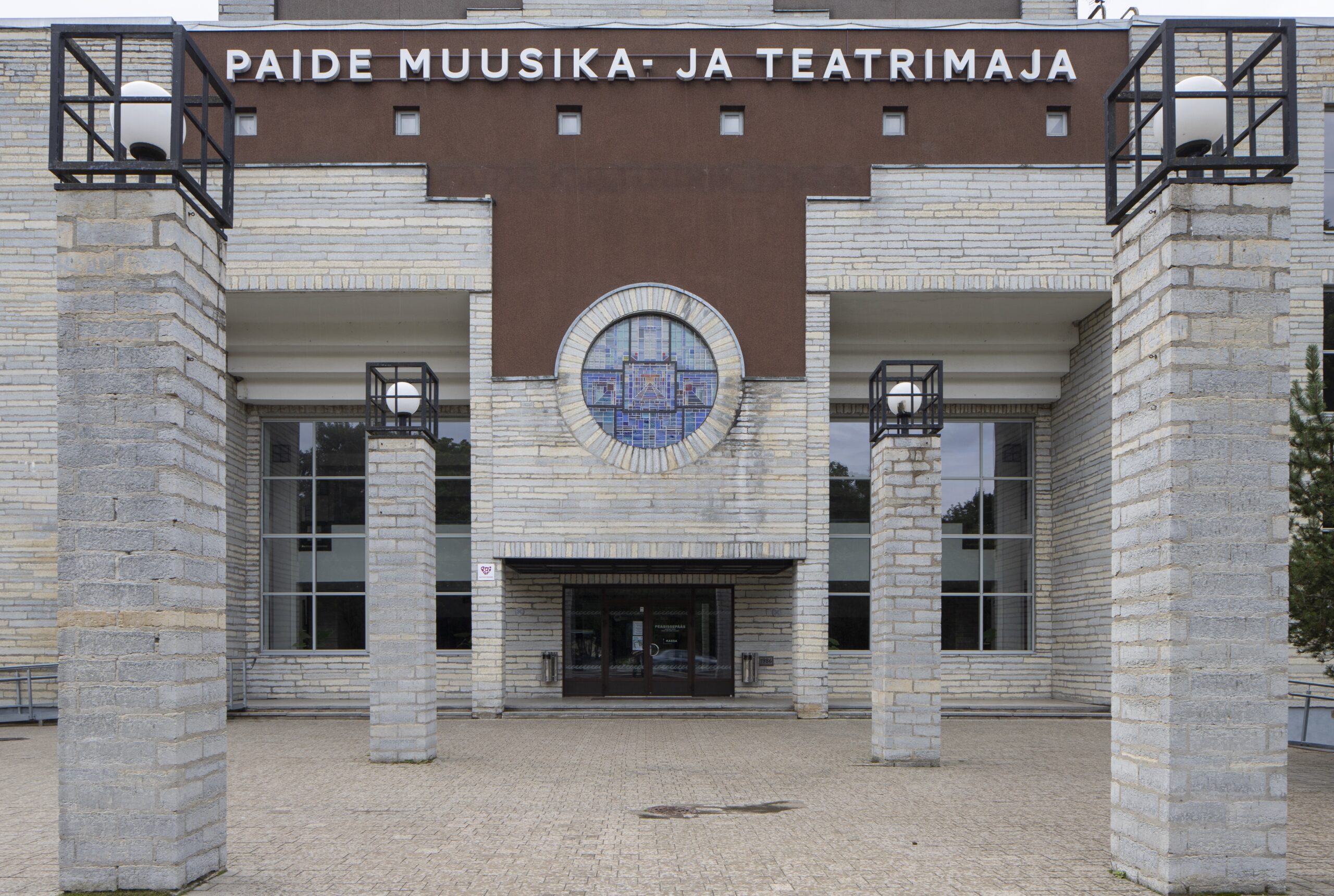Stained-Glass Windows in the Paide Cultural Centre
Years of completion: 1984–1991
Address: Järva County, Paide, Pärnu 18
Author Kaarel Kurismaa
Soldered stained glass
Architectural monument no. 30768 (the artworks are not listed as separate cultural monuments)
Paide Cultural Centre (architect Hans Kõll, 1984–1991) is the first architectural representation of the 1980s postmodernism in Estonia, and is protected under heritage conservation in its entirety (since 2016). The 1980s were characterised by a changing economic model – motivated by Western examples, the Soviet Union tried to develop its own consumption and recreation culture, which was followed by the appearance of commodious culture and entertainment centres in the towns of Estonia. Many of the buildings were gigantic compared to the general human scale of small towns, and the effect was only emphasised by the monumental stylistic pursuits of the postmodernist architecture.
The building’s interior (interior architects Tiiu Pai and Taimi Rõuk) and exterior form an expressive synthesis, the central motif of which is the square. Squares are used on floors, decorative walls, ceiling panels, windows, light fixtures, doors, furniture, and even trashcans. The finishing touches to the interior design were in the form of artworks created specifically for the centre. The job of designing the cultural centre’s art was given to Kaarel Kurismaa, who was a respected artist in the field of interior design by the time, having created kinetic artworks for Tallinn Post Office and the restaurant Gloria. Kurismaa was commissioned to design the café’s stained-glass windows, balcony barriers in the ballroom, and the stained-glass of the rose window decorating the main entrance. The element of the rose window originates from church architecture, and thus, being installed on the cultural centre’s façade, it gave the whole building a solemn appearance, as was also the case with the Estonian National Library that was completed a few years later. Kurismaa’s rose window bears the name Valguse rütm (“Rhythm of Light”). The artist based the designs of both the rose window and the 27 balcony barrier panels on the square motif that defined the interior architecture. The visually simple multicoloured compositions are reminiscent of the constructivist stained-glass artworks created by Theo van Doesburg in the 1920s.
Hans Kõll’s building plan for the Paide Cultural Centre was also the basis for the Põlva Cultural Centre (1991), which was constructed more modestly due to the diminished budget. While in Paide, the façade is covered by dolomite tiles and plaster, the cultural centre in Põlva had to settle with unconcealed silicate bricks. The interior was more austere as well – instead of the entire interior design, there were few details that created a ceremonious atmosphere, among them a semicircle-shaped stained-glass window by Kurismaa (1989). The interior design of the Paide Cultural Centre has survived well in its authentic form. Throughout the years, the only Kurismaa piece gone missing is the stained-glass that decorated the wall of the stage in the ballroom. Recently the stained-glass windows were removed from use in the café, but they are displayed on the café’s walls with the help of lightboxes.
Gregor Taul








